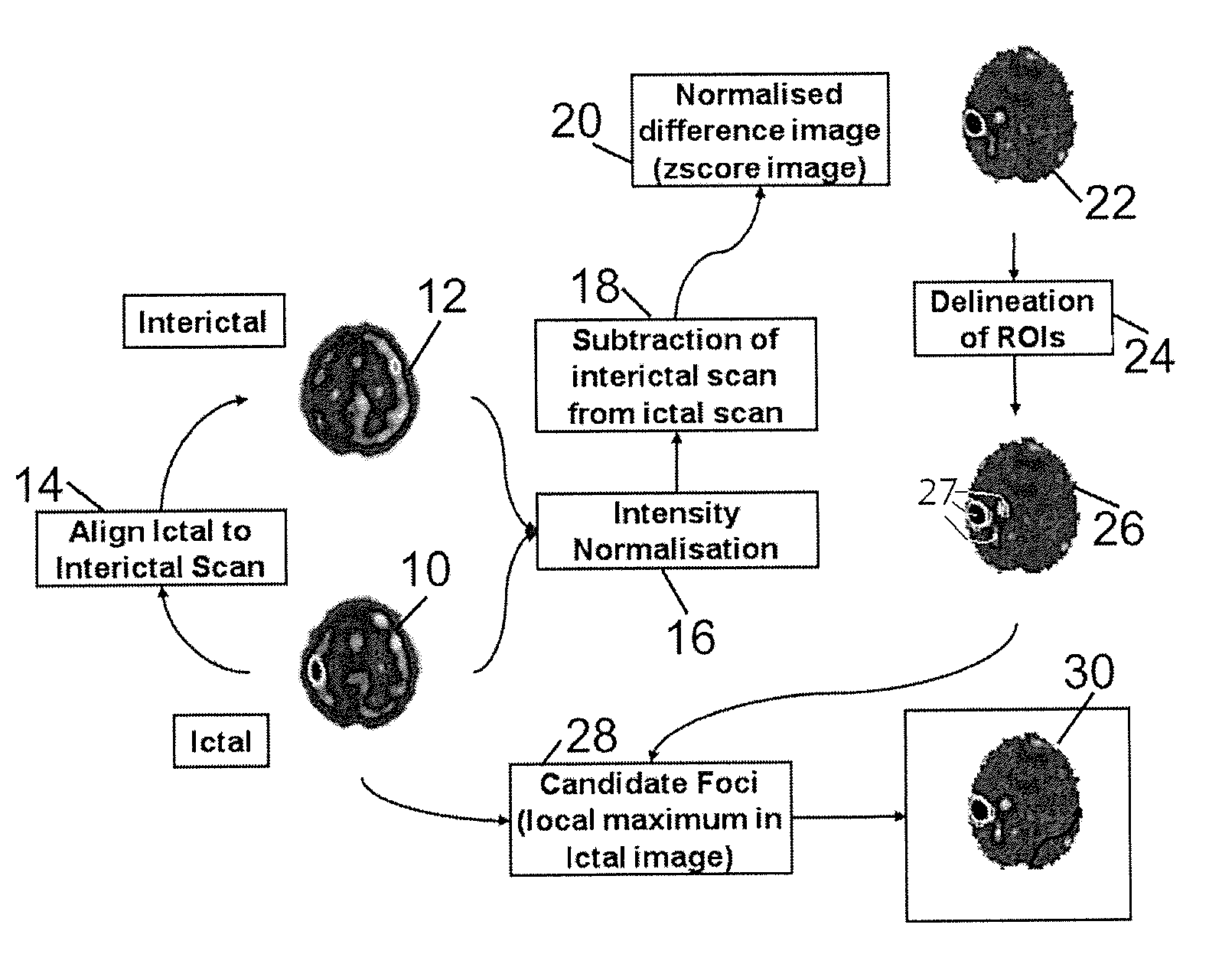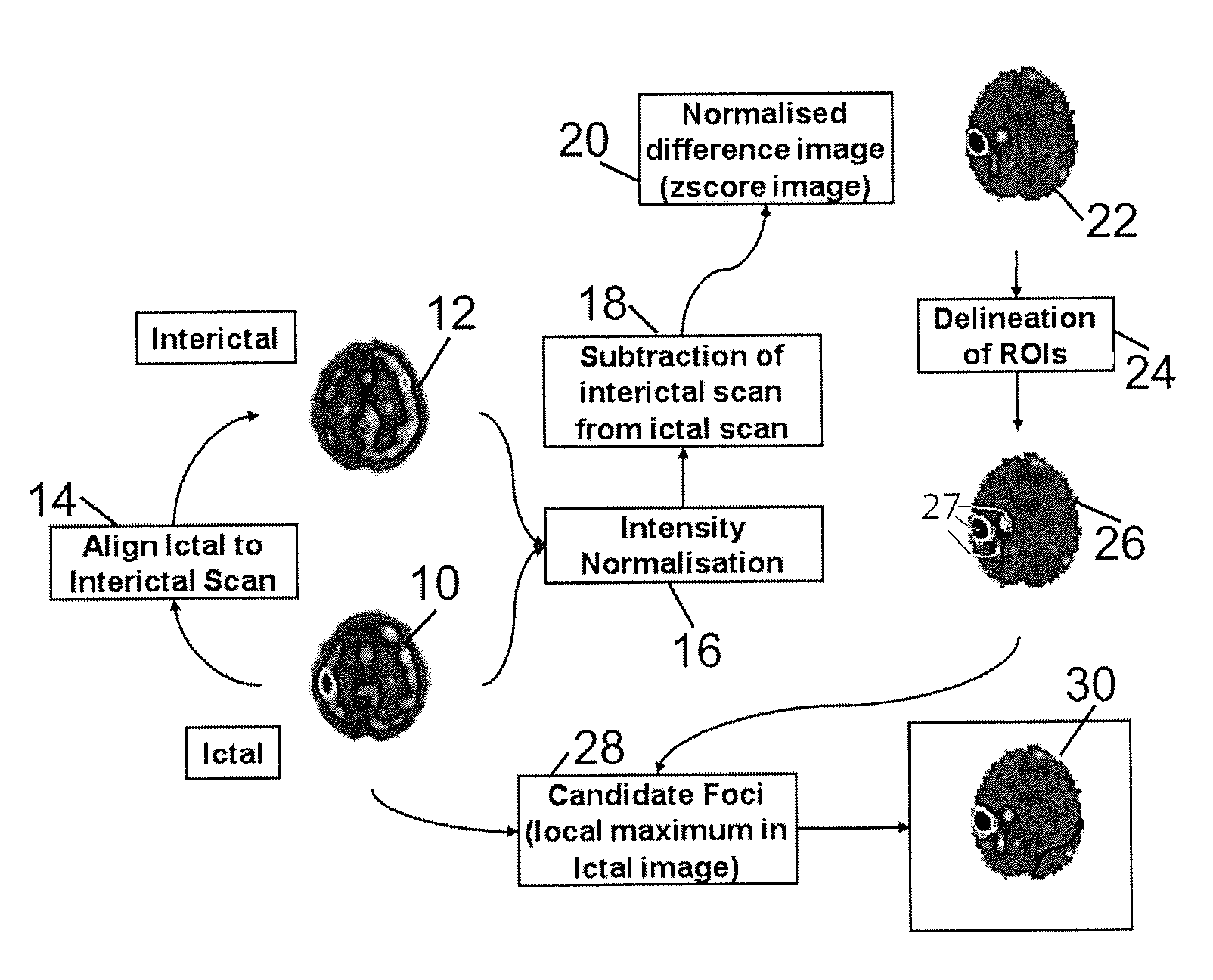Method for localization of an epileptic focus in neuroimaging
a neuroimaging and epileptic focus technology, applied in image enhancement, tomography, instruments, etc., can solve the problems of too many potential focus areas, difficult interpretation of difference images acquired according to current methods, etc., and achieve the effect of reducing the amount of distracting information and facilitating interpretation
- Summary
- Abstract
- Description
- Claims
- Application Information
AI Technical Summary
Benefits of technology
Problems solved by technology
Method used
Image
Examples
Embodiment Construction
[0022]The present invention provides a method for identifying candidate foci, in which no comparisons are made to a normal database, but the necessary information is extracted directly from an ictal-interictal difference image, itself derived as defined in the SISCOM method discussed above.
[0023]According to a method of the present invention, the process proceeds as in the conventional method described above as far as normalizing the difference image to a Z-score image and applying a threshold corresponding to number of standard deviations. By applying such a threshold, all potential focus regions in the difference image are identified.
[0024]As discussed above, this may result in identifying many potential focus regions. To reduce the amount of distracting information produced in the method so far, the present invention provides further steps in which the difference image is analyzed, and the intervention (ictal) image is compared to the analyzed difference image to confirm or rejec...
PUM
 Login to View More
Login to View More Abstract
Description
Claims
Application Information
 Login to View More
Login to View More - R&D
- Intellectual Property
- Life Sciences
- Materials
- Tech Scout
- Unparalleled Data Quality
- Higher Quality Content
- 60% Fewer Hallucinations
Browse by: Latest US Patents, China's latest patents, Technical Efficacy Thesaurus, Application Domain, Technology Topic, Popular Technical Reports.
© 2025 PatSnap. All rights reserved.Legal|Privacy policy|Modern Slavery Act Transparency Statement|Sitemap|About US| Contact US: help@patsnap.com


